The human microbiome, without a doubt, plays a crucial part in our general health, transforming the food we eat into a variety of substances that benefit our entire body. In reality, our systems contain an estimated 100 trillion "healthy" bacteria - necessary for our lives.
Good bacteria aid in digestion and nutrition absorption, and they create numerous vitamins in the intestine, including folic acid, niacin, and vitamins B6 and B12.
Our gut microorganisms create a range of vitamins, synthesise hormones such as serotonin, which regulates metabolic health and mood, and ferment fibre, converting it into short chain fatty acids that help reduce inflammation. Our genetics, environment, and the foods, medications, and drinks we ingest all influence the composition of our microbiome.
What is a microbiome test?
A microbiome test looks at the gut flora in a sample of a person's faeces. Microbiome testing can help individuals determine the various types of bacteria inside an individual GI tract. Thus, microbiome tests detect bacteria in the gastrointestinal (GI) tract of a person.
For example, People with significant microbial variety in their stomachs had lower rates of obesity, depression, and diabetes, and they are less prone to display early indicators of frailty as they age. Thus testing the contents of our gut could provide information on the species and quantities of bacteria in a person's gut.
Gut microorganisms have been related to insulin resistance, obesity, and metabolic illnesses, according to researchers. They also discovered that having a big number of a diverse range of bacterial species seemed to be beneficial in general.
However, microbiomes are as distinct as fingerprints. Even identical twins have different microbiomes. With so much variance across people, there is no agreement on what defines a "healthy" microbiome.
It is also not always obvious if certain bacterial strains and low levels of microbial diversity induce obesity and metabolic disorders, or vice versa. Some gut microorganisms appear to be useful to some people while being harmful to others.
Healthcare personnel may collect samples of a person's faeces and culture the germs found on them in a lab. This procedure should enable them to detect what sort of bacteria is generating specific signs, such as diarrhoea, and to guide the medication choices that they prescribe.
Commercial testing, on the other hand, is more likely to employ DNA analysis. Healthcare practitioners may determine the kinds and quantities of bacteria in the faeces by extracting DNA from the stool sample. The amount and varieties of bacteria in a person's stool can vary from sample to sample, and some bacteria may remain on the gut wall rather than in the stool. Furthermore, testing cannot determine whether the bacteria are alive or dead – just that they are present in the sample.
Hence, the human microbiome, without a doubt, plays a crucial part in our general health, transforming the food we eat into a variety of substances that benefit our entire body.
Good bacteria aid in digestion and nutrition absorption, and they create numerous vitamins in the intestine, including folic acid, niacin, and vitamins B6 and B12.
Our gut microorganisms create a range of vitamins, synthesise hormones such as serotonin, which regulates metabolic health and mood, and ferment fibre, converting it into short chain fatty acids that help reduce inflammation. Our genetics, environment, and the foods, medications, and drinks we ingest all influence the composition of our microbiome.
What is a microbiome test?
A microbiome test looks at the gut flora in a sample of a person's faeces. Microbiome testing can help individuals determine the various types of bacteria inside an individual GI tract. Thus, microbiome tests detect bacteria in the gastrointestinal (GI) tract of a person.
For example, People with significant microbial variety in their stomachs had lower rates of obesity, depression, and diabetes, and they are less prone to display early indicators of frailty as they age. Thus testing the contents of our gut could provide information on the species and quantities of bacteria in a person's gut.
Gut microorganisms have been related to insulin resistance, obesity, and metabolic illnesses, according to researchers. They also discovered that having a big number of a diverse range of bacterial species seemed to be beneficial in general.
However, microbiomes are as distinct as fingerprints. Even identical twins have different microbiomes. With so much variance across people, there is no agreement on what defines a "healthy" microbiome.
It is also not always obvious if certain bacterial strains and low levels of microbial diversity induce obesity and metabolic disorders, or vice versa. Some gut microorganisms appear to be useful to some people while being harmful to others.
Types of Microbiome Tests available
Various commercialised microbiome testing businesses may provide different testing methods, although generally, testing of a person's stool sample is the most common method. A corporation may provide one of two kinds of faecal testing. The first method searches for indicators that may suggest a sickness or disease, while the second requires DNA extraction.Healthcare personnel may collect samples of a person's faeces and culture the germs found on them in a lab. This procedure should enable them to detect what sort of bacteria is generating specific signs, such as diarrhoea, and to guide the medication choices that they prescribe.
Commercial testing, on the other hand, is more likely to employ DNA analysis. Healthcare practitioners may determine the kinds and quantities of bacteria in the faeces by extracting DNA from the stool sample. The amount and varieties of bacteria in a person's stool can vary from sample to sample, and some bacteria may remain on the gut wall rather than in the stool. Furthermore, testing cannot determine whether the bacteria are alive or dead – just that they are present in the sample.
Hence, the human microbiome, without a doubt, plays a crucial part in our general health, transforming the food we eat into a variety of substances that benefit our entire body.



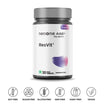



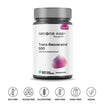
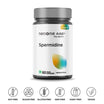


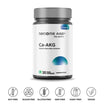

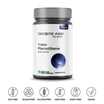



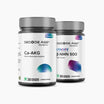







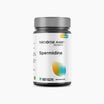







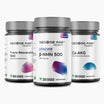




Leave a comment
This site is protected by reCAPTCHA and the Google Privacy Policy and Terms of Service apply.